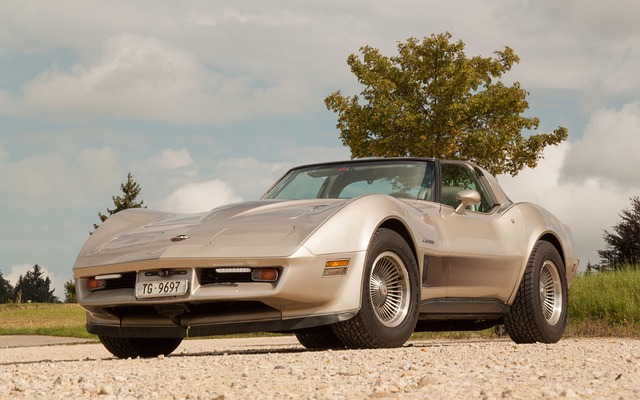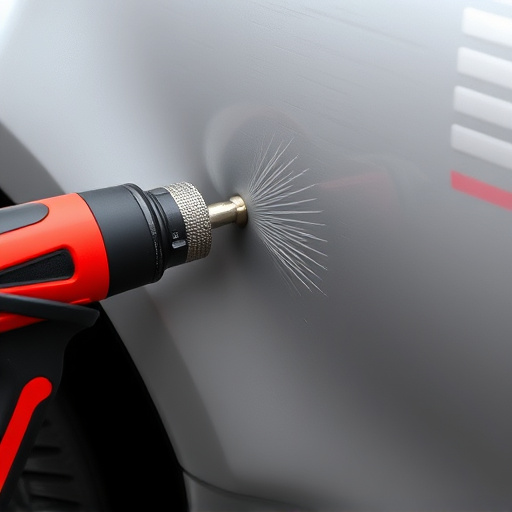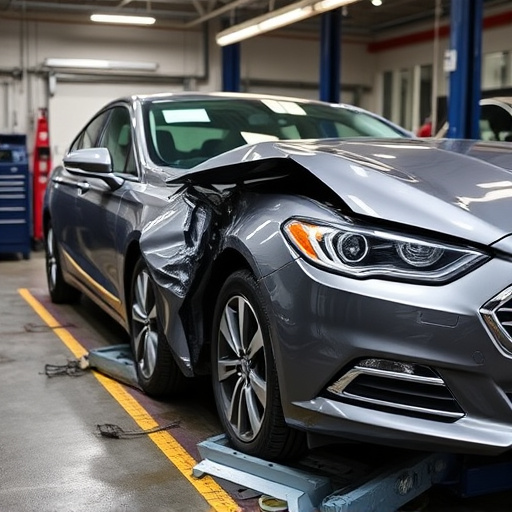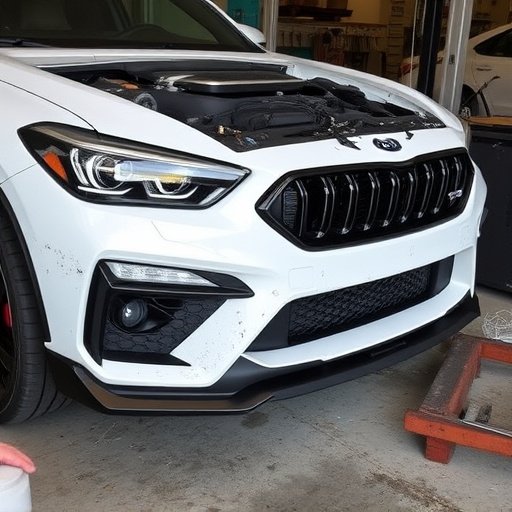Tesla vehicles' advanced electrical systems require specialized knowledge and precision for effective repair. Their intricate architecture, including high-voltage batteries, motor systems, and control modules, demands skilled technicians equipped with modern diagnostic tools. A systematic approach, from inspections to software updates, is crucial for accurate troubleshooting of sensors, control units, and wiring harnesses. Safety and optimal vehicle performance are ensured through meticulous rework on sensitive components, making Tesla repair procedures distinct from conventional auto repairs.
In today’s digital age, understanding Tesla repair procedures, particularly for electrical diagnostics and rework, is paramount. Teslas, with their sophisticated electric vehicle architecture, rely heavily on intricate electrical systems. This article delves into the heart of these systems, offering a comprehensive guide.
We’ll explore Tesla’s unique architecture, key components, and common issues. Then, we provide a step-by-step diagnostic process using advanced tools and methods. Additionally, we share effective rework strategies for identifying and repairing faulty parts, ensuring long-lasting solutions with real-world case studies. Master these Tesla repair procedures, and you’ll be equipped to navigate the intricate landscape of electric vehicle maintenance.
- Understanding Tesla Electrical Systems for Effective Diagnostics
- – Overview of Tesla's electric vehicle architecture
- – Key electrical components and their functions
Understanding Tesla Electrical Systems for Effective Diagnostics

Tesla vehicles are renowned for their cutting-edge technology and electric power, but diagnosing and repairing their intricate electrical systems requires a deep understanding. At the heart of Tesla’s operations lies a complex web of sensors, control units, and high-voltage components, all working in harmony to deliver superior performance. To effectively troubleshoot and repair these systems, technicians must be adept at navigating through vast amounts of data generated by the vehicle’s network. This involves utilizing advanced diagnostic tools to monitor voltage levels, current flows, and communication protocols between various electronic control units (ECUs).
Effective Tesla repair procedures demand a systematic approach, starting with a thorough inspection to identify potential issues. Technicians should be equipped with knowledge of not just electrical systems but also software updates and the vehicle’s overall architecture. Unlike traditional automotive repair, Tesla diagnostics often involve delicate rework on sensitive components, demanding precision and expertise. This may include re-soldering faulty connections or reprogramming ECUs to ensure seamless integration within the vehicle’s intricate network.
– Overview of Tesla's electric vehicle architecture

Tesla’s electric vehicle architecture sets it apart from traditional internal combustion engine cars. At the heart of Tesla vehicles lies a sophisticated network of electrical components, including high-voltage batteries, advanced motor systems, and intricate control modules. This architecture demands a unique approach to repair procedures, particularly for electrical diagnostics and rework. Unlike conventional auto collision repair or bumper repair processes, Tesla repairs require specialized knowledge and equipment due to the high-voltage nature of its power trains.
Tesla’s electric vehicles are designed with safety as a top priority, so any repair involving electrical systems must be handled by trained professionals equipped with the latest diagnostic tools. When addressing issues in these sophisticated systems, mechanics employ advanced scanning tools to pinpoint problems within the network of sensors, control units, and wiring harnesses. This precise method allows for targeted repairs, whether it’s a faulty component replacement or reprogramming a module, ensuring optimal performance and safety without compromising the vehicle’s overall integrity.
– Key electrical components and their functions

The electrical system in a Tesla vehicle is a complex network of components that work in harmony to power various functions and ensure optimal performance. Key electrical components include the battery pack, which stores energy and acts as the primary power source; electric motors, responsible for converting electrical energy into mechanical motion; and advanced control units (ACUs) that manage and optimize the entire system. These ACUs play a crucial role in diagnostic procedures, monitoring voltage levels, current flow, and temperature to ensure efficient operation.
During Tesla repair procedures, especially for electrical diagnostics and rework, technicians must have a deep understanding of these components and their interactions. Issues may arise from faulty wiring, sensor malfunctions, or software glitches, requiring meticulous troubleshooting. Auto collision centers often handle complex cases where car paint repair is combined with electrical rewiring to restore vehicles to their pre-accident condition, ensuring safety and reliability on the road.
Tesla repair procedures for electrical diagnostics and rework require a deep understanding of the brand’s unique electric vehicle architecture. By familiarizing yourself with the key electrical components and their functions, you can effectively navigate and troubleshoot potential issues. This specialized knowledge is essential in ensuring the reliability and performance of Tesla vehicles, allowing for precise repairs and a seamless driving experience.














